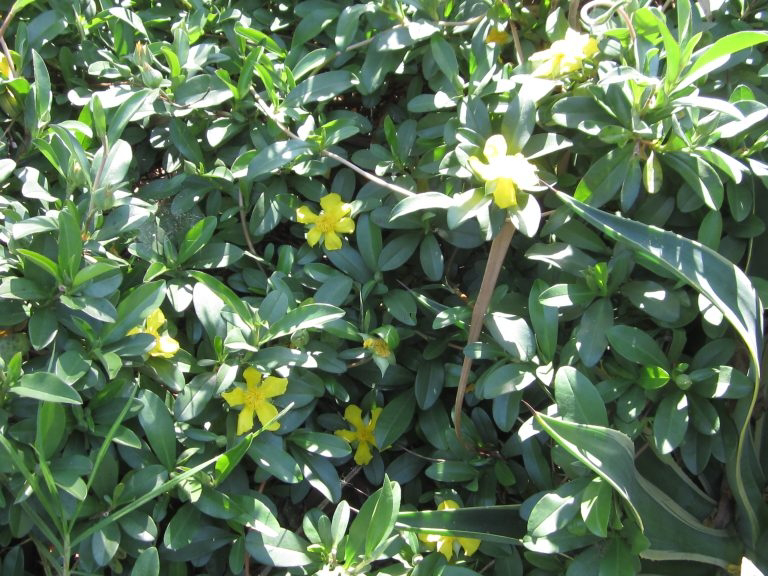1. Hidden Nectar: The snake vine's flowers have a secret – their nectar is tucked away deep inside, attracting specialized pollinators with long tongues like butterflies and specific bee species.
2. Ant Allies: The snake vine might have an unexpected friend – ants! In some cases, ants are drawn to the plant's sugary secretions produced by extrafloral nectaries (small glands outside the flowers). These ants may defend the vine from herbivores in a fascinating example of symbiosis.
3. Chemical SOS: The snake vine isn't just visually striking; it can also communicate chemically. When stressed by drought or herbivore damage, the plant releases volatile organic compounds. These airborne signals might serve as a distress call, attracting beneficial insects that prey on the attackers.
4. Fossil History: Fossils of Hibbertia, the genus to which the snake vine belongs, have been found in New Zealand. This suggests a wider historical distribution for these plants millions of years ago, hinting at their long-standing ecological role.
5. Morning Glory Mimic: The snake vine's flowers superficially resemble morning glories, potentially attracting pollinators familiar with those blooms and ensuring efficient pollination.
6. Colorful Defense: The snake vine's vibrant yellow flowers might not just be for show. Some studies suggest the color may deter herbivores by mimicking poisonous plants, adding an extra layer of protection.
7. Fragrant Surprise: While not strongly scented, the snake vine's flowers do emit a subtle, citrusy fragrance that may further attract pollinators, aiding in successful reproduction.
8. Fast Climber: The snake vine is a champion climber! Under ideal conditions, it can grow incredibly fast, reaching several meters in a single season, quickly transforming a space with its cascading foliage.
9. Adaptable Roommate: The snake vine is a versatile addition to your garden. It can tolerate a range of light conditions, thriving in full sun to part shade, making it suitable for various garden placements.
10. Self-Sufficient Seeder: The snake vine readily produces seeds that can germinate and establish new plants, ensuring its continued presence in the garden. This can be a plus or a minus depending on your desire for its spread.
11. Air Purifying Potential: Early studies suggest the snake vine might have air-purifying properties, similar to other houseplants. However, more research is needed to confirm this benefit.
12. Food for Thought (for Insects!): The snake vine's flowers play a role beyond aesthetics. The unique nectar-producing structure provides a food source for specialized insects, promoting biodiversity in the garden.
13. Nighttime Oxygen Boost: Like many succulents, the snake vine is believed to release oxygen at night, potentially improving air quality in your bedroom if kept nearby.
14. Low-Maintenance Marvel: The snake vine's drought tolerance and disease resistance make it a low-maintenance plant, perfect for busy gardeners who don't have a lot of time for upkeep.





